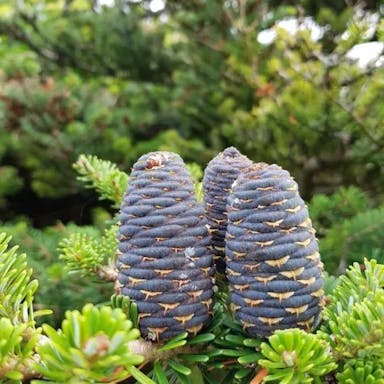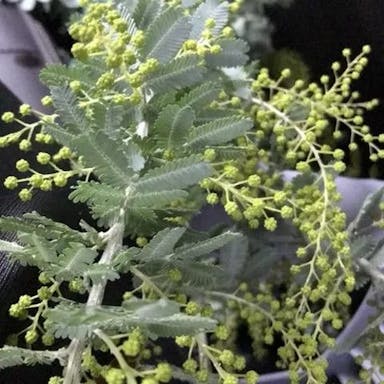Australian blackwood is best suited for potted planting due to its adaptability to container growth. When potting, choose a container with good drainage holes and fill it with well-draining potting mix. Place the plant in the center of the pot at the same depth as it was in the nursery container. Water thoroughly after planting and keep the soil consistently moist but not waterlogged. Repot the Australian blackwood every 2-3 years in a slightly larger container to prevent root-bound conditions. Prune any dead or damaged roots during repotting. Monitor for pests like aphids or scale insects and treat promptly if detected. Regularly fertilize during the growing season to promote healthy growth.
Australian blackwood
- Scientific name
- Acacia melanoxylon
Basic Information
- Fabaceae Family Acacia Genus Australian blackwood Species
- Fabaceae > Acacia > Acacia melanoxylon
- 83%
- The Completeness of This Encyclopedia
Please help us complete the encyclopedia, Terrarium is a encyclopedia service to be completed with everyone in the world. Currently, this page is 83% complete. For more information on how to contribute, please click here.
- Tree
- Height
- 1000cm ~
- Flower Color
- Leaf Color
- Anthesis
- spring
- Sunlight Exposure
Full Sun Long hours of sunlight from morning to afternoon Partial Shade A location in the shade of a tree or where either the morning or afternoon is shaded Full Shade A place where there is no direct sunlight
- Full Sun
- Hardiness Zones
This is an indicator to know to which zone each plant can winter. Knowing the zone of each plant gives you an idea of the cold temperature resistance when grown in the ground without a roof. 2: -42.7 to -40.0 3: -39.9 to -34.4 4: -34.3 to -28.9 5: -28.8 to -23.3 6: -23.2 to -17.8 7: -17.7 to -12.2 8: -12.1 to -6.7 9: -6.6 to -1.1 10: -1.0 to 4.4 11: 4.5 to 10.0
- 9
- Cold resistance
- Fair
- Heat resistance
- Good
- Habitat of origin
- Australia
- Growth Rate
- Fast
What is Australian blackwood (Acacia melanoxylon)?
What is Australian blackwood (Acacia melanoxylon)
Flower meaning
Australian blackwood can be propagated through seeds, cuttings, and division. Seeds should be sown in well-draining soil, kept moist, and placed in a warm, bright location. Cuttings can be taken from semi-hardwood in late summer, treated with rooting hormone, and placed in a moist, sterile medium. Division involves separating the plant into smaller sections, ensuring each has roots attached, and replanting in suitable soil. To maximize propagation success, it is advisable to use a combination of methods. Harvest seeds when they are mature and dry, and take cuttings from healthy, disease-free plants.
Calendar of Australian blackwood (Acacia melanoxylon)
Calendar
Australian blackwood thrives in well-drained soils with a pH level between 5.5 and 6.5. It prefers sandy loam or loamy soils rich in organic matter. Fertilize Australian blackwood with a balanced slow-release fertilizer in early spring and early summer. Apply the fertilizer around the base of the plant, following the manufacturer's instructions for the correct amount. Avoid over-fertilizing, as it can lead to nutrient imbalances. Monitor the plant's growth and adjust the fertilizer application accordingly. Regularly check the soil quality to ensure it remains well-drained and fertile. Maintaining optimal soil conditions and providing the right nutrients will promote healthy growth and flowering in Australian blackwood.
How to grow Australian blackwood (Acacia melanoxylon)
Watering
Australian blackwood is susceptible to various pests and diseases, including the blackwood borer, which can cause significant damage to the plant by burrowing into the wood. This pest can weaken the plant's structure and lead to wilting or dieback of branches. Another common issue is the blackwood leaf spot, a fungal disease that manifests as dark spots on the leaves, eventually causing them to wither and fall off. To prevent these diseases, it is essential to maintain good air circulation around the plant, avoid overhead watering, and promptly remove any infected plant material. Additionally, ensuring proper soil drainage and avoiding waterlogged conditions can help prevent root rot, another common problem that can cause the plant to wither. Regularly inspecting the plant for signs of pests or diseases and taking appropriate action can help maintain the health of Australian blackwood.
Soil and Fertilizer
Australian blackwood is available in two main varieties: one with golden-yellow heartwood and the other with dark brown heartwood. When selecting seedlings, choose those with healthy green leaves and sturdy stems. Look for seeds that are plump, firm, and free from mold. Ensure seedlings have well-developed root systems and no signs of disease. Opt for varieties that suit your climate and soil conditions. Consider the growth rate and ultimate size of the tree when selecting a variety. It is essential to choose high-quality seeds and seedlings to ensure successful growth and development.
Sunlight and Place
Australian blackwood typically blooms in the spring season in the United States. The flowers of Australian blackwood are at their best during the month of April. Blooming usually occurs once a year, lasting for a few weeks. It takes approximately 2-3 weeks for the flowers to fully bloom. To make the flowers bloom longer, ensure the plant receives adequate sunlight, water, and nutrients. Pruning dead or damaged branches can also promote more abundant blooming.
Advanced Information of Australian blackwood (Acacia melanoxylon)
Pruning
Australian blackwood, scientifically known as Acacia melanoxylon, is a species of Acacia native to southeastern Australia. It is a medium-sized tree that can reach heights of up to 30 meters. The bark is dark grey to black, hence the name melanoxylon, and the wood is highly valued for its use in furniture making. The flowers of Acacia melanoxylon are bright yellow, occurring in clusters from late winter to early spring. The leaves are dark green and bipinnate, giving the tree a feathery appearance. This species produces seed pods that are flat and twisted, containing small seeds. Acacia melanoxylon is relatively easy to grow and is often used in landscaping and reforestation projects. There are several varieties of Acacia melanoxylon, each with slight differences in leaf shape and growth habit. The tree is known for its ornamental value and its ability to attract birds and pollinators to the garden.
Planting and Harvest
The flower language commonly used in America for the Australian blackwood plant is: - Strength - Resilience - Protection - Endurance One typical example is "Strength," symbolizing the inner power and resilience to overcome challenges and obstacles in life, reflecting the Australian blackwood's sturdy nature. Birth flowers are not applicable for Australian blackwood.
Propagation
For Australian blackwood, watering frequency should be adjusted based on the season. During the growing season in spring and summer, water the plant every 7-10 days. In autumn and winter, reduce watering to every 14-21 days. Ensure the soil is well-draining to prevent waterlogging, which can lead to root rot. Check the soil moisture level by inserting a finger 1-2 inches into the soil; water when the top layer feels dry. Water the plant deeply, allowing the water to reach the roots, but avoid overwatering as it can cause stress to the plant. Adjust watering based on environmental conditions such as temperature and humidity.
Pests and Diseases
Australian blackwood thrives in full sun to partial shade, preferring at least 6 hours of direct sunlight daily. It exhibits moderate cold tolerance, able to withstand temperatures as low as -10°C. The plant also has good heat tolerance, but may benefit from some shade during extreme heatwaves. It grows best in temperatures ranging from 18-25°C. During summer, provide ample water and mulch to retain moisture. In winter, reduce watering to prevent root rot. Australian blackwood should be placed in well-draining soil. It can handle strong sunlight but may require protection during intense midday sun. Aim for 6-8 hours of sunlight per day for optimal growth.
Habitat of Australian blackwood (Acacia melanoxylon)
Habitat
Toxicity of Australian blackwood (Acacia melanoxylon)
Health Benefits
- edible
- Inedible
- Toxic
- No toxicity
NO DATA
Toxic for dogs and cats
NO DATA












